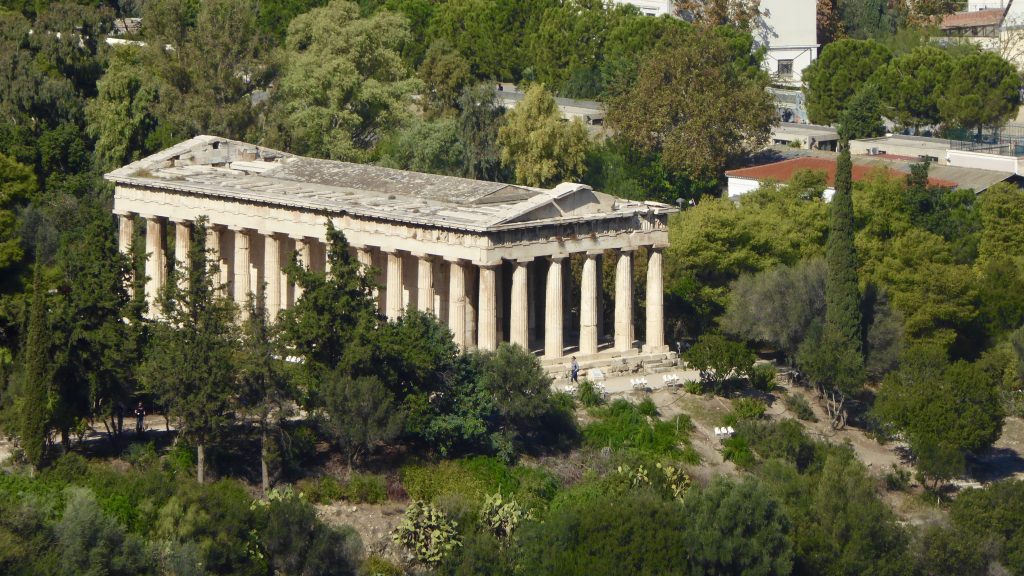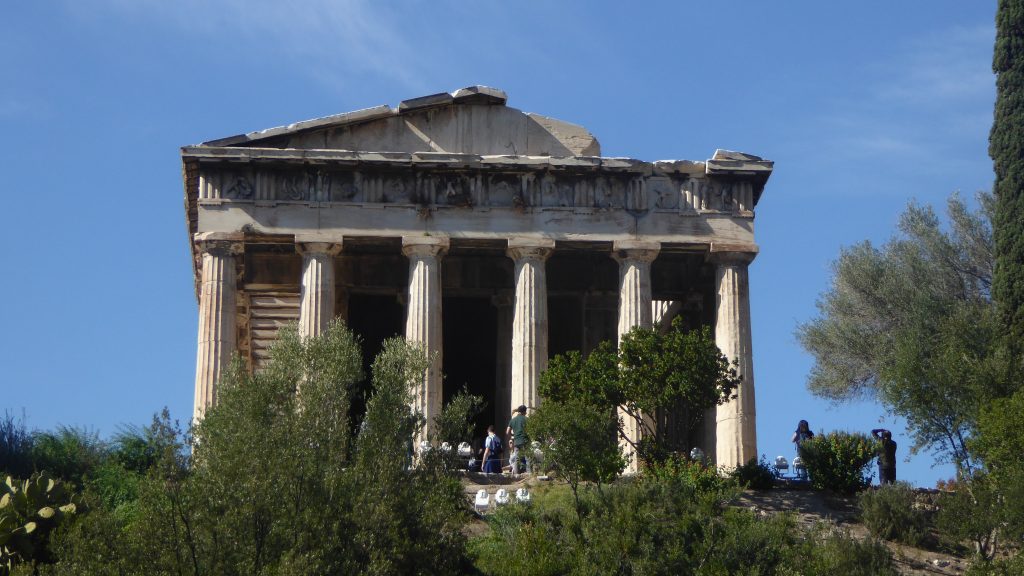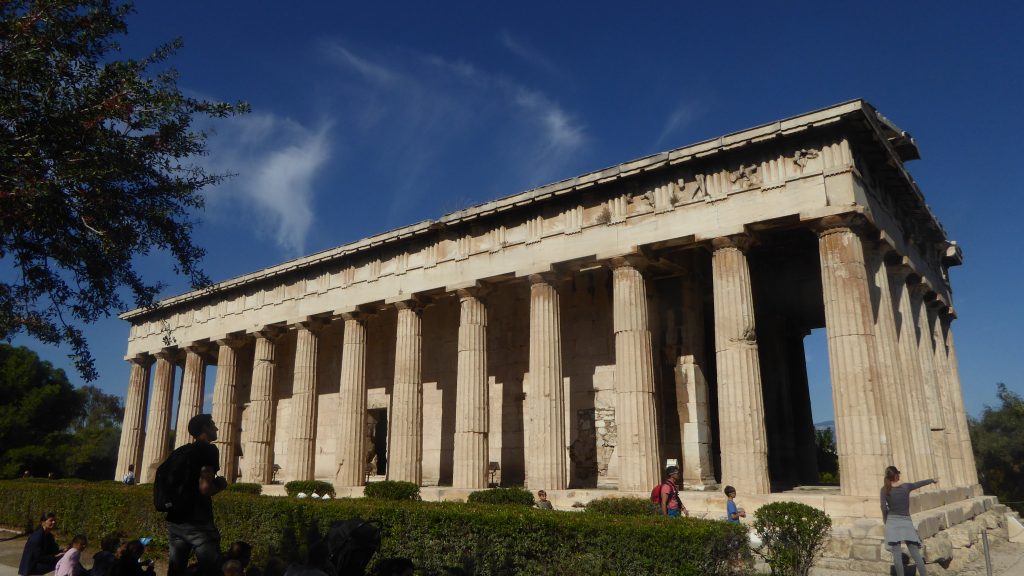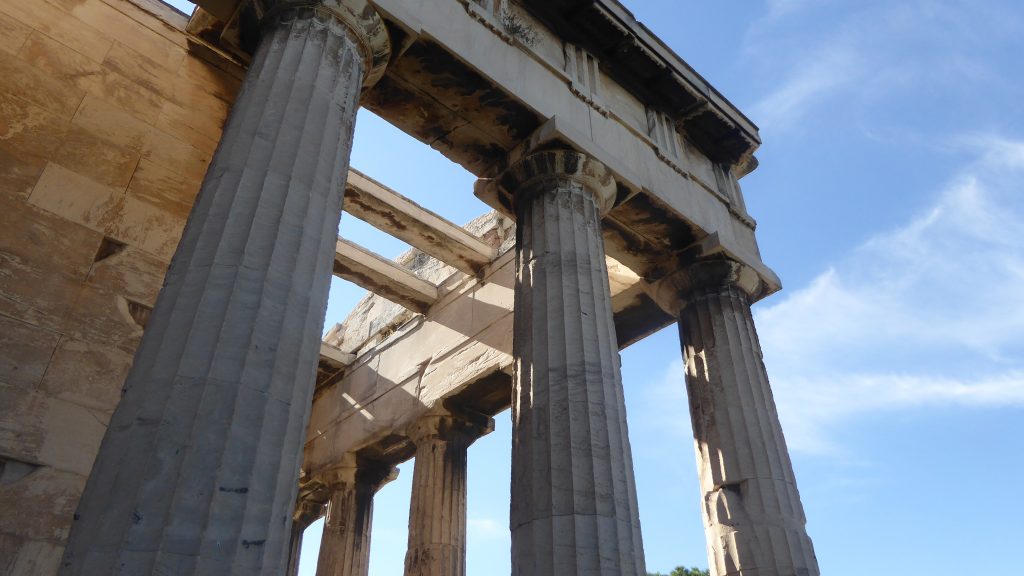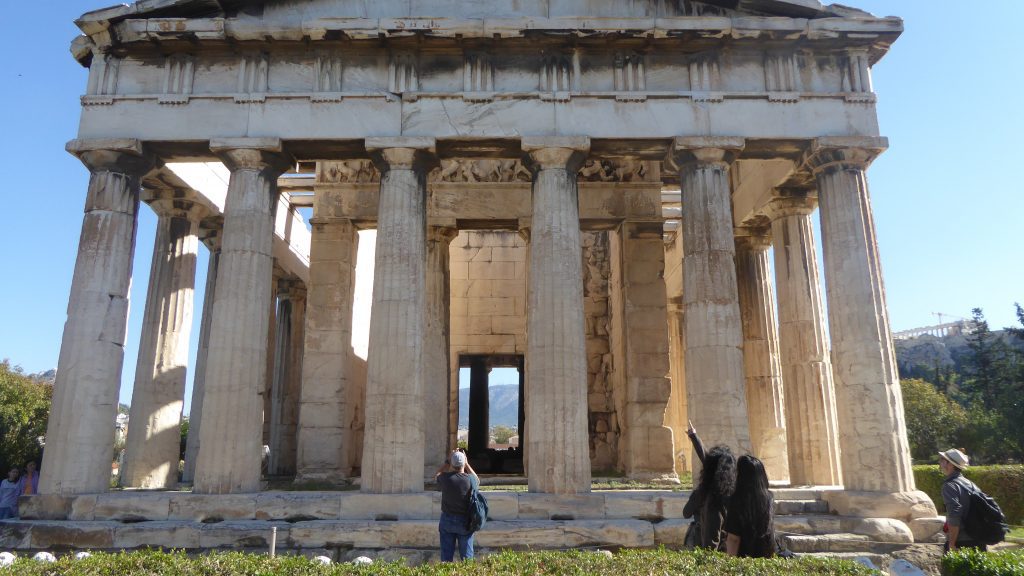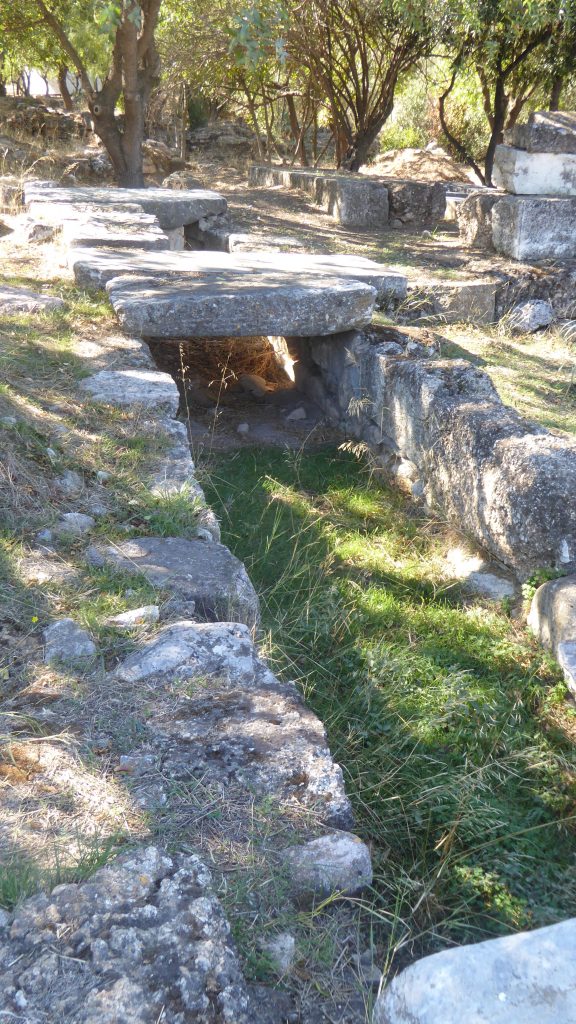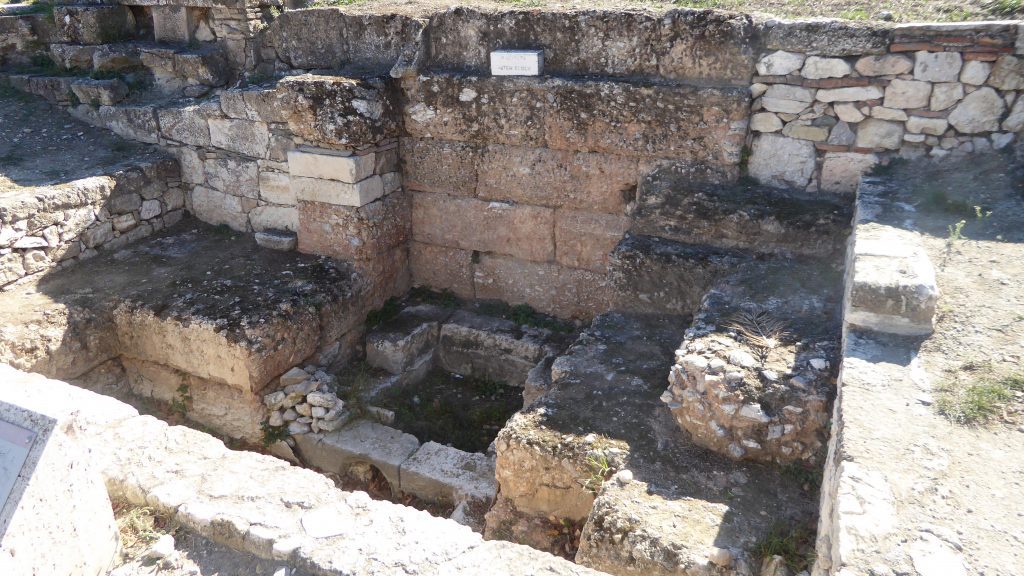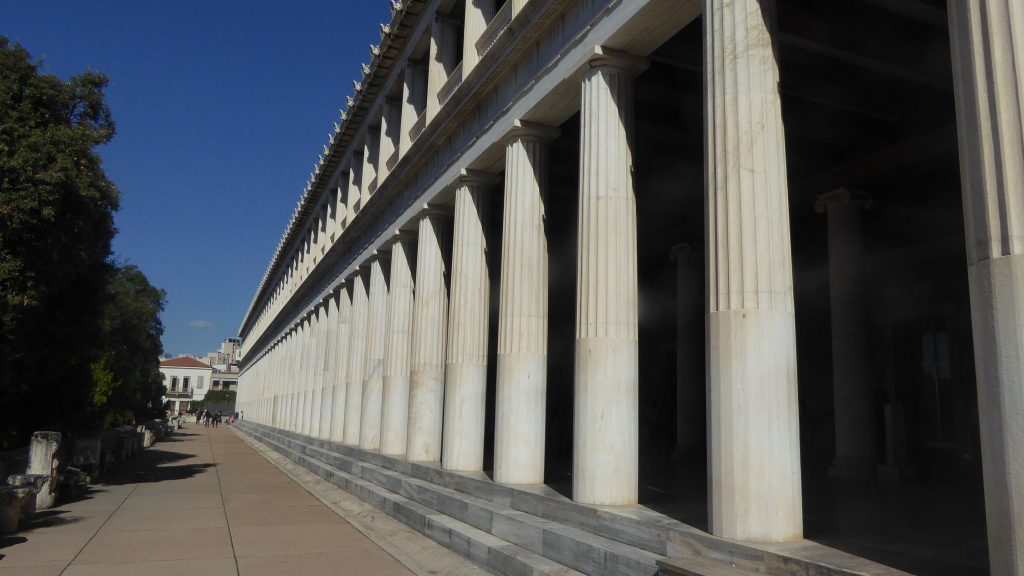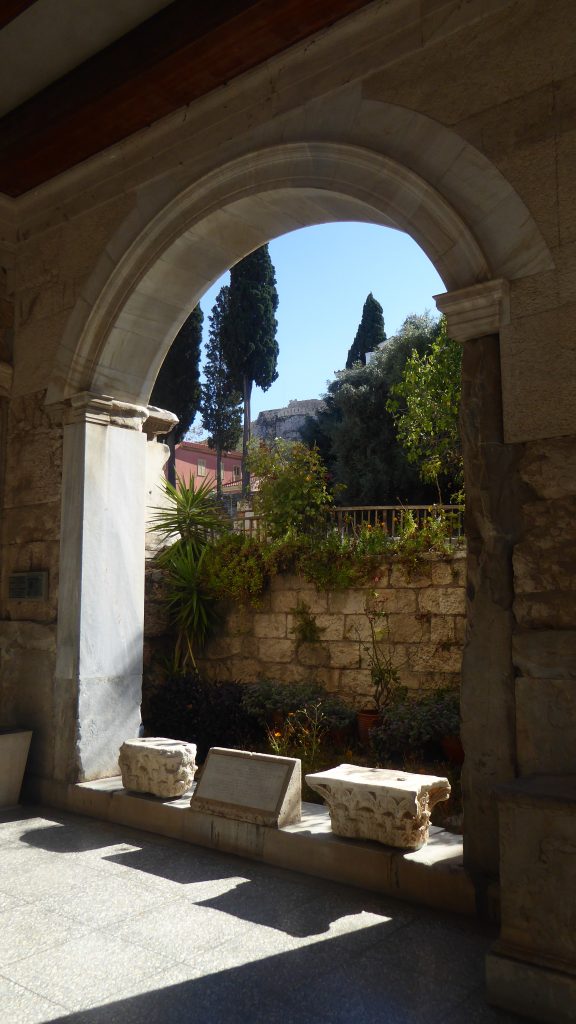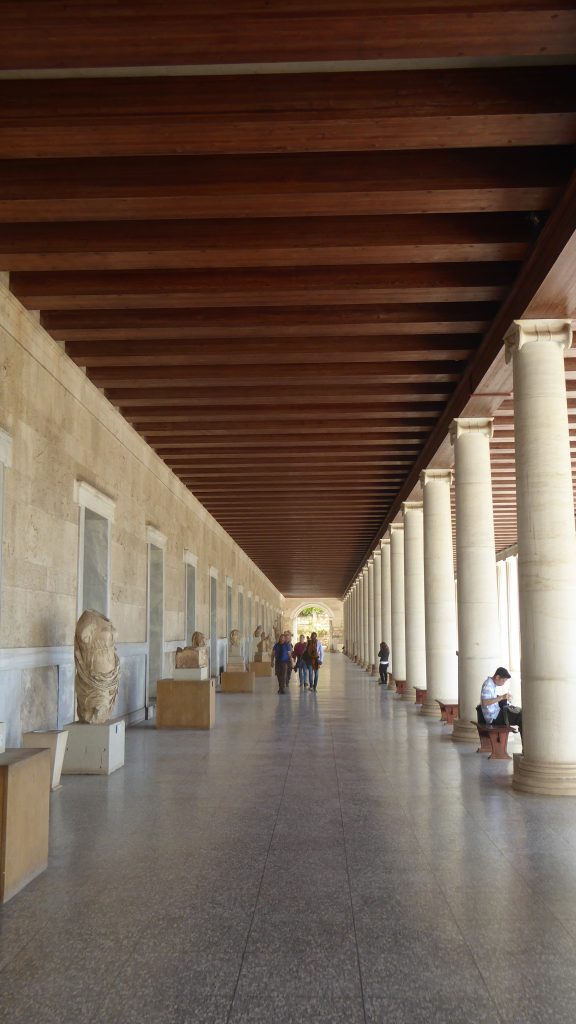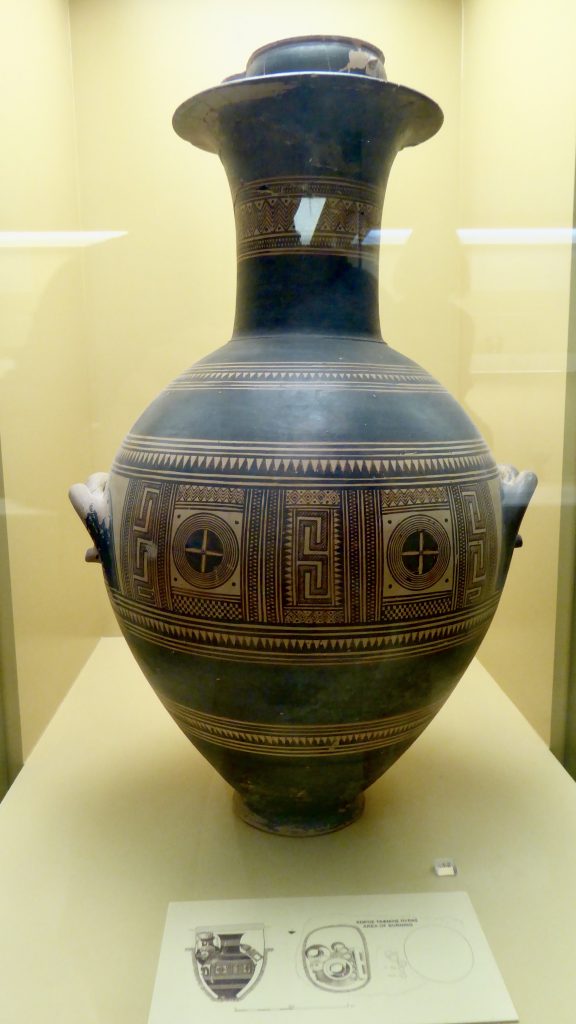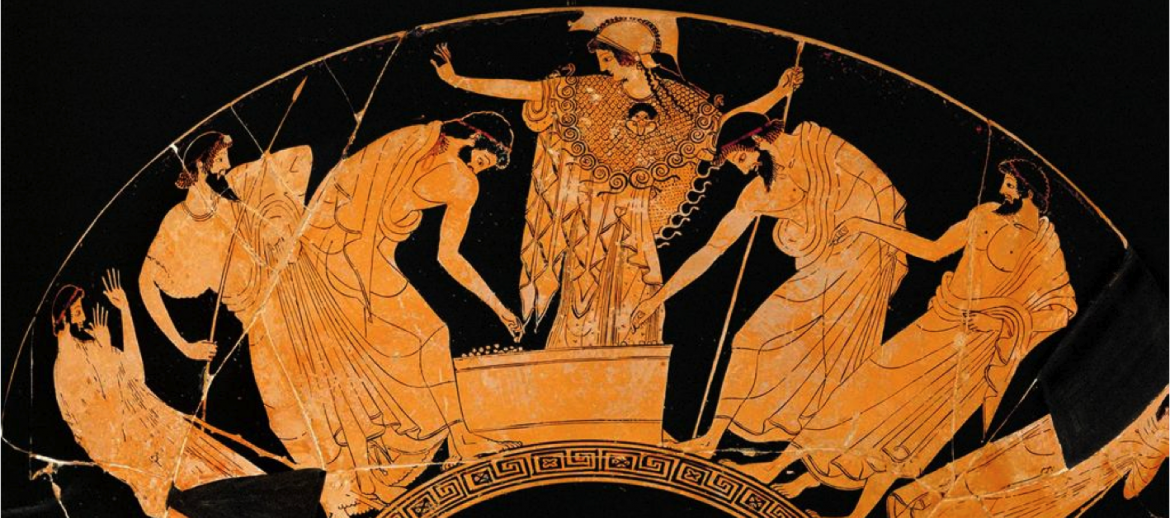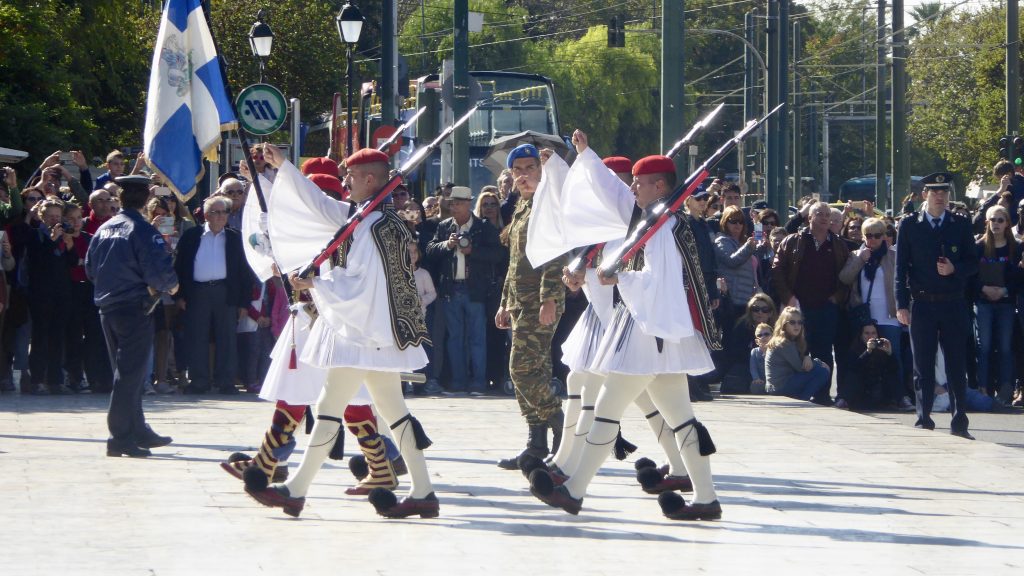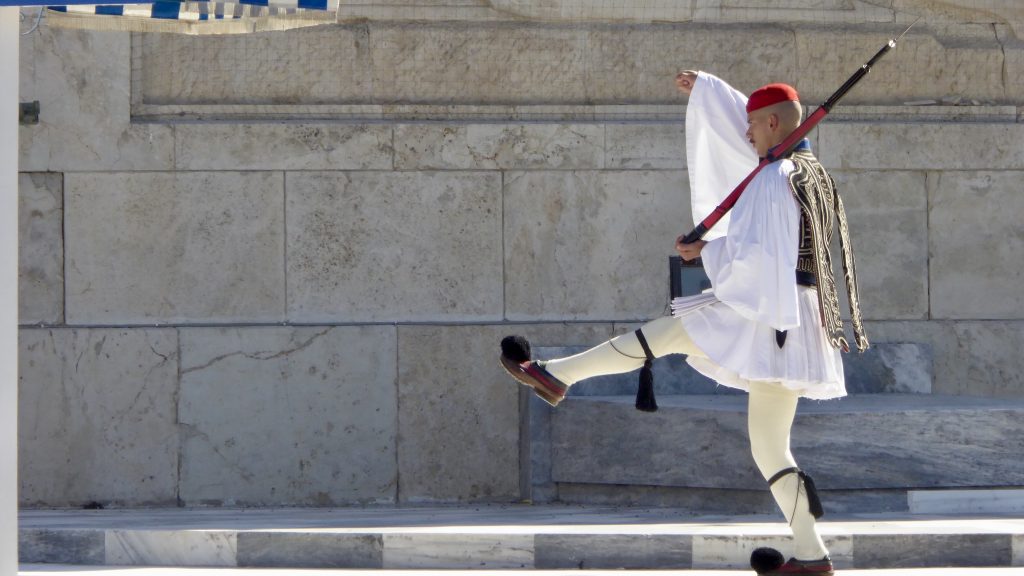The last day in Athens dawned sunny and cool. We had decided the night before that we would have a leisurely morning, find a nice breakfast spot, view the changing of the guards at the Parliament building, explore the Ancient Agora, and tie up any loose shopping or browsing ends. The morning would have been even more leisurely had we realized that the EU began daylight savings time during the night, so we were up an hour earlier than need be. But the rest of the plan went swimmingly.
Changing of the Guard
The Changing of the Guard actually happens every hour, but without the pomp and circumstance of the Sunday morning spectacle, which includes a marching band and full uniforms for the soldiers. I suspect the British Ministry of Silly Walks had something to do with the exaggerated marching styles. We arrived half an hour early to find already large (and pushy) crowds, but we managed to see most of the ceremony and take a few photos.
The Ancient Agora
The Ancient Agora is a large site, some of which is still being excavated, around which the social and political lives of golden-age Athens revolved. The site includes several temples, shops, forums, Hadrian’s library, and other buildings and services, most of which are ruins at this point. The notable exception is the magnificent Temple of Hephaestus which overlooks most of the Agora and which has survived largely intact. There is also the impressive Stoa, but that was reconstructed in the 1950s and is not original. The Agora site sits at the base of the Acropolis and it’s main road was the Panathenaic Way, the old entrance to the fortress on the hill.
The Agora was an important market and social gathering spot, but it was also ground zero for most of our modern Democratic principles—at least, the ones we’re supposed to have. This is where Socrates and Pericles discussed philosophy and art, where citizens were randomly selected for daily jury duty, and where a politician who was deemed to be too power mad or inept could be ostracized by a direct vote of the people. *sigh* It’s extraordinary to walk the same paths that Sophocles and Demosthenes walked and imagine what it must have been like when humanity invented democracy.
